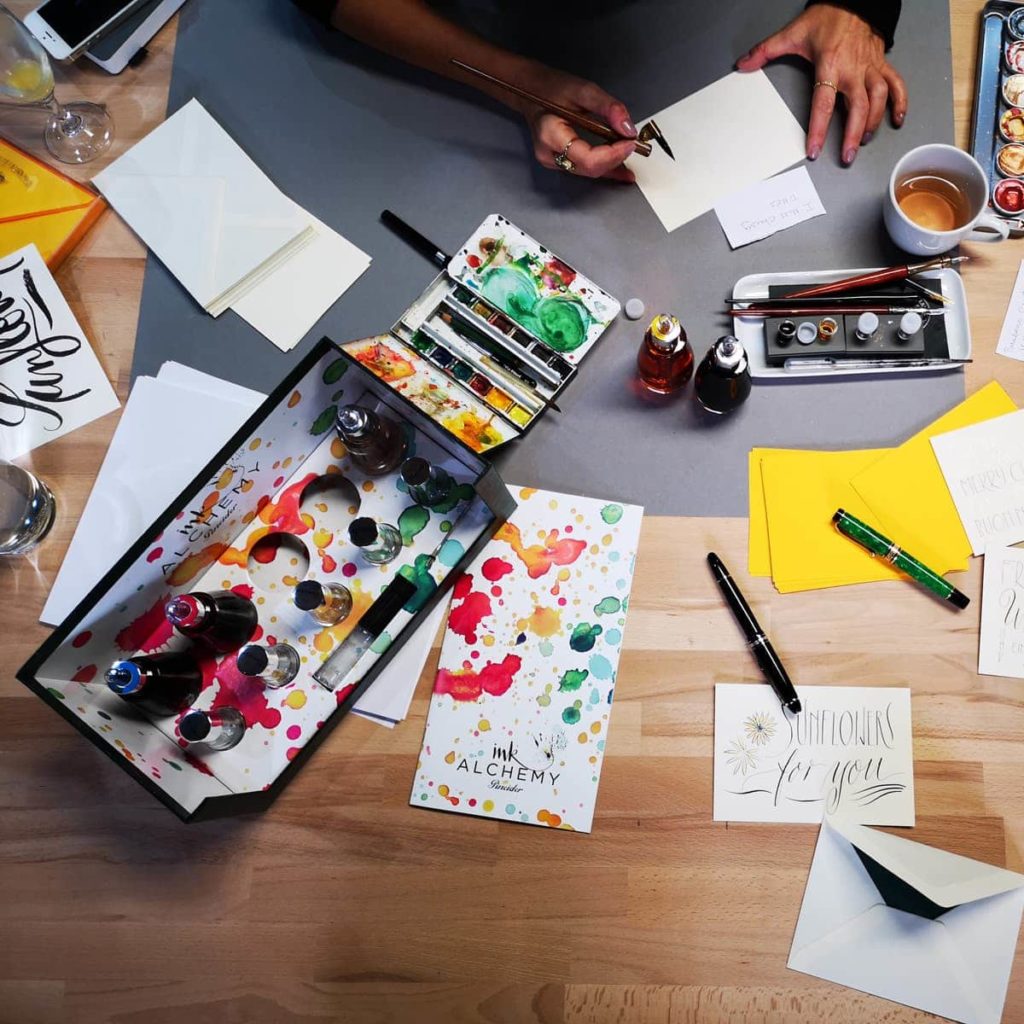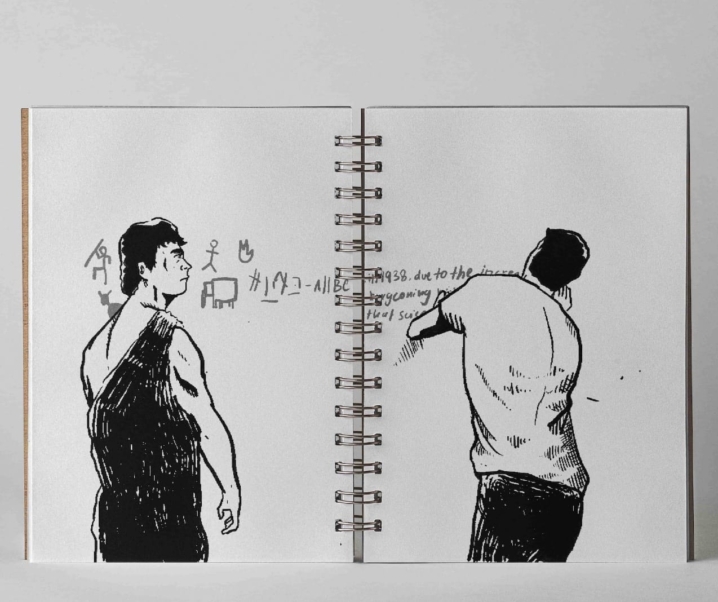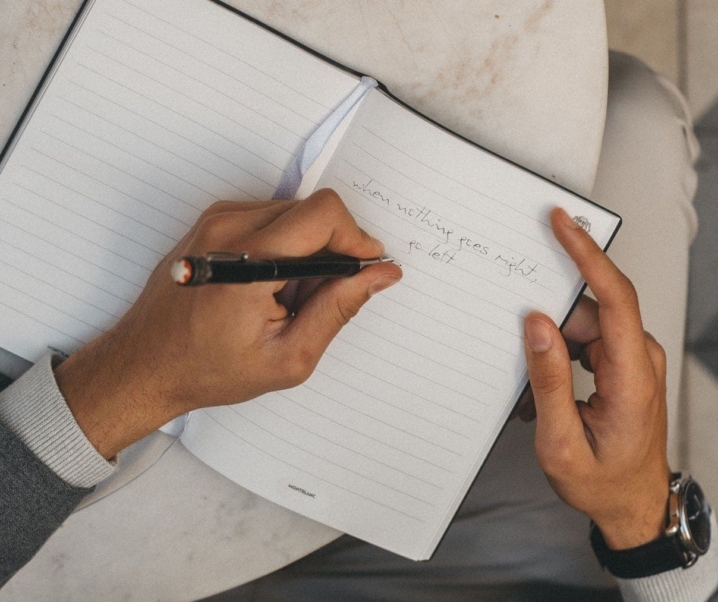Left-handed writers like myself often avoid using fountain pens due to the difficulties of using an instrument originally designed for right-handers. However, in my years of writing, I have found the sentiment that fountain pens are not for left-handed writers to be simply untrue! With a little practice, anyone can master the use of a fountain pen. In this article, let us explore how a left-handed writer may pick up a fountain pen and enjoy its benefits to the fullest.
Early difficulties for left-handed writers
Left-handed writers often face early challenges when writing with a fountain pen. For example, as they write from left to right, their writing hand often gets in the way of the ink, smudging it before it has a chance to dry. Additionally, lefties ‘push‘ their pen across the paper, compared to right-handed writers who ‘pull’. This causes the fountain pen’s nib to catch the paper’s fibers more often, creating an unpleasant scratching sensation, which is further exacerbated by a commonly steeper angle of writing and firmer grip.
As a result, left-handed writers often give up writing with a fountain pen very quickly in favour of rollerballs and ballpoints. In doing so, they lose the rich experience of writing with a fountain pen.
After several years without, I returned to the craft of fountain pen writing to find that with a little practice, one could still attain great pleasure from it, regardless of one’s dominant hand. Despite my initial difficulties, I have become a passionate advocate for writing with fountain pens.
Grip Techniques
Over time, most left-handed writers adopt unique writing postures and grip techniques that make writing with a fountain pen considerably more difficult. These can generally be grouped into three basic categories.
First, there is the straight writer. This method of writing most closely resembles a classic right-handed writing style. The left hand mirrors the posture of a right-hander, resting it on the writing line. Naturally, straight writers struggle the most with smudging their writing.
Secondly, there is the over-writer. Typically popular with younger lefties, the writing hand rests above the writing line, creating a writing posture akin to a hook. Although over-writers have fewer problems with smudging, they cramp quickly because of the unnatural writing position.
The third and undoubtedly most practical and healthy writing position is that of the under-writer. These writers rest their hand below the writing line. The under-writing position is advantageous because it avoids both smudging and cramping. As a left-handed writer, it is therefore a good idea to train yourself to use this position, allowing for an easier and more relaxed writing experience. As always, an approximate angle of 45° should be maintained between the pen and the paper.
Choosing a suitable fountain pen – what should you look out for?
Regardless of writing posture, left-handed writers can still enjoy the experience of writing with a fountain pen if they take into account a few factors.
1. Form factor
When choosing a fountain pen, left-handers and right-handers alike should pay attention to the size, thickness, length and weight of the writing instrument. These should feel comfortable and natural in the hand – it is important to try out different form factors to find the right one.
2. Nib size
In addition, the choice of nib is essential for writing comfort. Depending on the left-hander’s writing posture, different nibs should be considered. Left-handed writers need not limit their choices to specially manufactured left-handed nibs such as LAMY’s LH nib.
For straight writers, fine nibs (F) are generally recommended as less ink flows onto the paper, allowing one’s writing to dry quickly. For over-writers, medium (M) or even broad (B) nibs may be the best solution, as poor ink flow can be avoided. Under-writers have the widest range of options, as they are almost unrestricted in their choice of nib. Lefties are generally advised not to use oblique nibs without some experience, as these are usually ground for right-handers. In addition, left-handers may find it difficult to use special nibs such as flex, italic or stub nibs. However, their use is by no means impossible – perhaps just a little more challenging.
3. Nib material
Depending on one’s preference, a gold or steel nib can be equally recommended. Gold nibs have the striking advantage of naturally adapting to the writer’s posture over time. This makes gold nibs a premier choice for left-handed writers whose writing habits are often unique and individual. However, they are also more susceptible to deforming while writing heavy-handedly, which lefties are prone to do. Steel, on the other hand, adapts less well, but is more robust than gold without compromising the experience of writing.
Special nibs fir left-handed writers
Some manufacturers like LAMY and Pelikan produce specially ground nibs (LH) for left-handers. They are usually based on a medium nib (M) and modified slightly for left-handed use. However, these are typically intended as practice nibs for beginners. As a lefty choosing nibs, you should not limit yourself to any particular nib until you have found what works for you.
As a general principle, both standard and special nibs should be tried out, as it is only through the process of experimenting that you can discover what is best for you.
Paper and ink for left-handers
Paper and ink should also be considered by left-handers when writing with fountain pens.
Inks that dry well allow its water content to evaporate quickly without affecting colour or composition. Examples of these are Pilot’s Iroshizuku ink series and Diamine inks. Alternatively, “fast-dry inks” are designed to be absorbed by paper as quickly as possible, allowing the paper’s surface to dry almost instantaneously. Document-proof inks often have these properties, such as those from Montblanc, De Atramentis and Rohrer & Klinger.
Paper should also be chosen well when writing with a fountain pen. Smooth, coated paper, such as those from Midori, Tomoe River or Hahnemühle allows nibs to glide over paper, but slows down the drying process. Uncoated paper, on the other hand, absorbs any ink in seconds, but has a much rougher surface that can lead to unwanted feathering and bleeding on paper. A balance of the two such as the one found in Leuchtturm 1917 notebooks may be optimal for lefties – but again, it is crucial to experiment with different types of paper.

Only by trying out different nibs, inks and paper can you know what suits you best. This is how you can achieve a unique and pleasing writing experience with a fountain pen.
And now lefties! It’s your turn to discover what the world of fountain pens has to offer.
This article was first published in German here.










Schreibe einen Kommentar